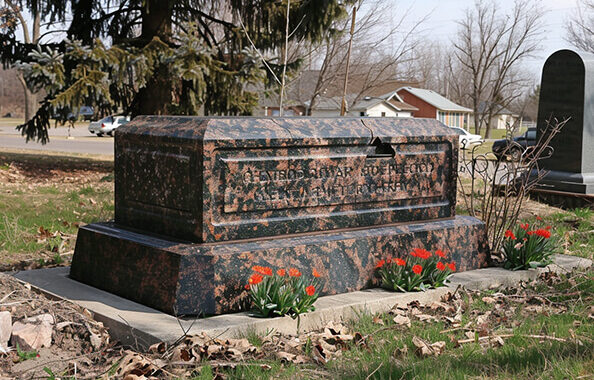Granite headstones have long been revered for their durability, timeless beauty, and ability to stand as enduring memorials to loved ones. However, despite their resilience, granite headstones are not immune to the effects of time and environmental factors. One of the challenges faced by these solemn structures is the potential for cracking. In this article, we delve into the various factors that can cause granite headstones to crack.
-
Natural Flaws and Inclusions:
Granite, while renowned for its strength, is a natural material that may contain inherent flaws and inclusions. These imperfections, such as fissures or weak points within the stone, can contribute to the development of cracks over time. Quarrying and fabrication processes may expose these weaknesses, making the headstone susceptible to eventual cracking.
-
Temperature Fluctuations:
Extreme temperature fluctuations can exert stress on granite headstones, leading to expansion and contraction of the stone. In regions where temperatures vary significantly, especially between seasons, the repeated cycles of heating and cooling can weaken the granite over time. This stress can eventually result in the formation of cracks.
-
Freeze-Thaw Cycles:
In colder climates, the freeze-thaw cycle poses a significant risk to granite headstones. Water that seeps into the pores of the stone can freeze during colder temperatures, causing it to expand. As the ice thaws, the stone contracts. This constant expansion and contraction can lead to internal stress and, eventually, the development of cracks.
-
Improper Installation:
The way a granite headstone is installed plays a crucial role in its long-term stability. If the foundation or base is not properly prepared, leveled, or adequately supported, it can result in uneven pressure distribution on the headstone. Uneven pressure may lead to stress points and, subsequently, cracks in the granite.
-
Impact and External Forces:
Accidental impacts or external forces, such as falling branches, vandalism, or even accidental collisions during cemetery maintenance, can cause immediate damage or create micro-cracks in the granite. Over time, these small imperfections may propagate into larger, more visible cracks.
While granite headstones are celebrated for their durability, it’s essential to recognize the potential factors that can contribute to cracking over time. Natural flaws, environmental conditions, improper installation, and external forces all play a role in the structural integrity of these monuments. To ensure the longevity of granite headstones, proper care, maintenance, and installation are imperative. Families and caretakers alike should be aware of these potential causes and take proactive measures to mitigate the risk of cracking, preserving the dignity and lasting tribute that granite headstones offer to those who have passed.

